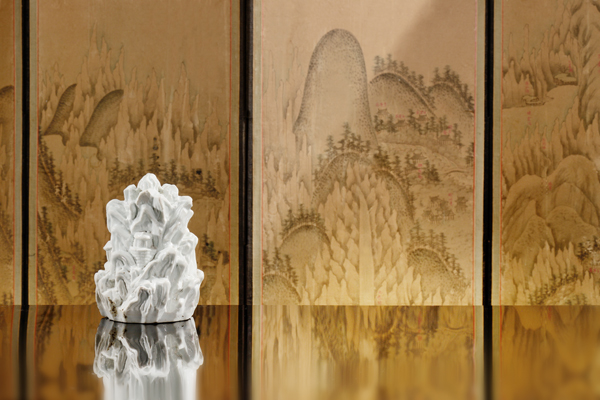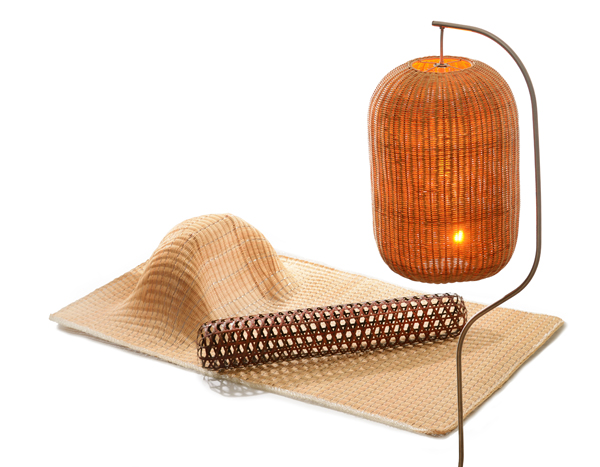‘Healing’ puts new twist on getting away from it all
Published: 04 Aug. 2013, 21:23

A painting and an ink dropper featuring Mount Kumgang. Provided by the museum
A special exhibition at the National Folk Museum of Korea hopes to explore just that. Titled “Healing in Nature,” the exhibition introduces some 118 pieces of folk items as well as contemporary artworks, which have to do with summer scenes or recreation in ancient times.
From the exhibition, we can guess that some packed their backpacks and left for Mount Kumgang in today’s North Korea - which was and still is deemed the most scenic mountain on the entire Korean peninsula - while more lazy ones just sat on their daecheongmaru and played janggi, Korean chess.
Daecheongmaru are the open-air spaces in traditional Korean houses where people enjoyed unobstructed natural views and wind as well as easy access to front and rear gardens.
“This exhibition is unique in that the visitors will go into nature, be travelers themselves, or become the owner of daecheongmaru and enjoy a nap there,” said Kim Hee-su, one of the curators of the exhibition. “We hope the busy Koreans of today will forget the summer heat and their daily responsibilities here.”
It’s true that the visitors will get involved at this exhibition as it is designed to be quite interactive. They have to stand, sit and even lie down.

A contemporary piece, “Jari and Larva Lamp” by Ha Ji-hun, and a wooden pillow owned by the museum.
In the second part, titled “Experience sitting down,” visitors will sit on daecheongmaru, look at paintings of nature scenes such as a barley field and listen to the sounds of nature like wind, water and bugs. They can also try on traditional summer clothing, such as a summer jacket made of ramie fabric.
In the third and last part, visitors are encouraged to lie down on the floor and enjoy the star-filled night sky installed on the ceiling of the exhibition hall as well as an animation the organizers have made.
It is notable how the folk museum is actively adopting technologies like augmented reality as well as various installation artworks to be more relatable to modern people.
The museum also experimented by juxtaposing different relics as well as folk items with contemporary artworks. For instance, a folding screen featuring Mount Kumgang is set up with an ink dropper shaped like the scenic mountain. A painting of a traveler with a traditional backpack, shoes and tobacco pipe is placed with actual pieces of a traditional backpack, shoes and a tobacco pipe. A painting of aristocrats playing janggi is again displayed with janggi with beautiful dragon prints.
Pieces done by foreigners are also an interesting part of the exhibition. A 1928 painting of Mount Kumgang by Lilian Miller (1895-1943) and a 1921 painting of an aristocrat’s home by Elizabeth Keith (1887-1956) are all glimpses into how foreigners viewed Korea in the tumultuous early 20th century when the country was under Japanese colonization (1910-1945).
BY KIM HYUNG-EUN [hkim@joongang.co.kr]
“Healing in Nature” runs until Sept. 23. Admission is free. It takes place at Special Exhibition Hall I of the National Folk Museum, which is within the Gyeongbok Palace in the Gwanghwamun area. Hours are 9 a.m. to 6:30 p.m. in August and to 6 p.m. in September. It closes every Tuesday.










with the Korea JoongAng Daily
To write comments, please log in to one of the accounts.
Standards Board Policy (0/250자)